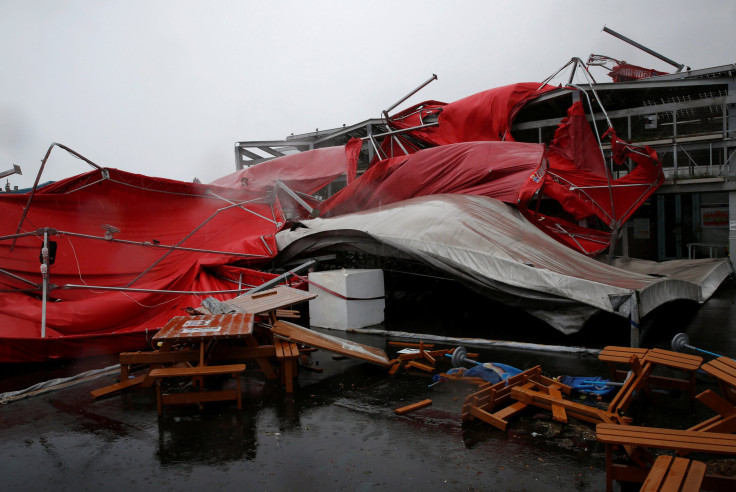Typhoon Megi Update 2016: Tropical Storm Path Leads To Southeast China, Leaves Millions Without Power In Taiwan

Typhoon Megi is headed to southeast China after leaving millions without power in Taiwan and a trail of damage. Weather reports suggest Megi may lose strength as it gets closer to China’s coast Tuesday afternoon or conditions could worsen overnight, particularly across eastern Guangdong and Fujian as wind speeds are already over 56 miles per hour in Fujian province capital, Fuzhou.
Full footage of #typhoon #Megi smashing into Hualien #Taiwan today - monster waves & violent wind https://t.co/qF904t4YV5
— James Reynolds (@EarthUncutTV) September 27, 2016
Typhoon Megi did weaken as it passed over the mountainous terrain of Taiwan and entered into the South China Sea. Despite the drop in wind speeds, China officials are still expecting damaging flooding throughout the southeastern coast until Megi completely dismantles from Wednesday into Thursday. Weather officials are expecting southeast China to receive about four to eight inches of rainfall across Guangdong, Fujian and southern Jiangxi through Thursday.
#TyphoonMegi making landfall in Taiwan. pic.twitter.com/2zNYN1Gqbg
— Andrew Miskelly (@andrewmiskelly) September 27, 2016
Taiwan, meanwhile, is recovering from the damage left behind by Typhoon Megi, which was the third typhoon to hit the island in September. Along with the destructive winds -- which clocked as high as 124 miles per hour, according to Taiwan's Central Weather Bureau, Megi’s rainfall poured at about two to three inches per hour when it finally made landfall on Tuesday. In Taipingshan, an area of Datong township, rainfall accumulated up to 35 inches. Some areas in northern Taiwan picked up over a foot of rain in less than 24 hours, the CWB reported.
Nearly 3 million homes lost power as a result of Typhoon Megi, according to local media. Taipower, the country’s sole electric provider, said power was cut off by Tuesday evening in 2.899 million homes causing the second biggest power outage in the country since 2015 when Typhoon Soudelor left 4.5 million homes without power.
Only one person has been reported dead and 75 others have suffered injuries related to the storm. 8,000 people have been evacuated from “disaster-prone” areas, Taiwan’s Central Emergency Operation Center said. More than 3,700 tourists were transported by ferry to safer grounds.
© Copyright IBTimes 2024. All rights reserved.






















